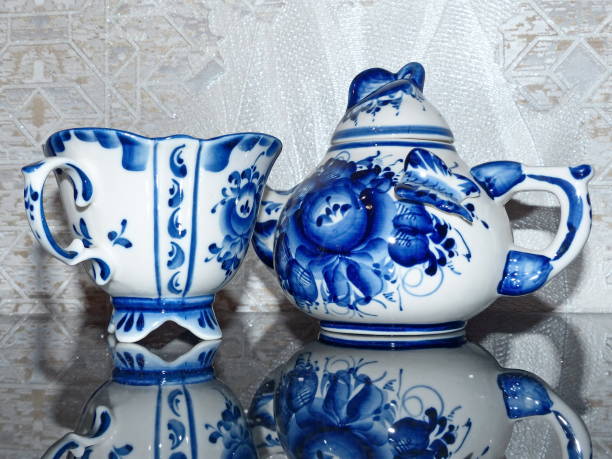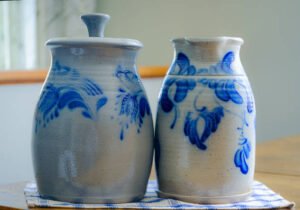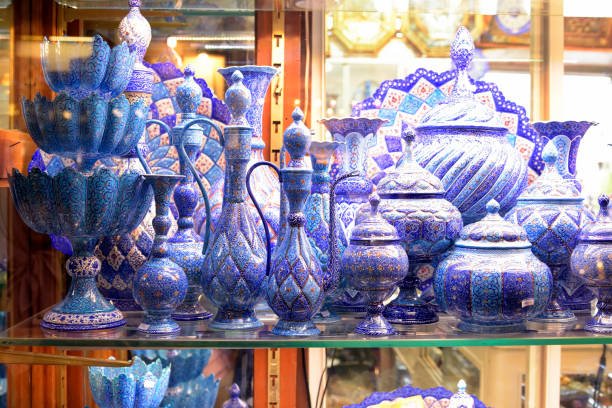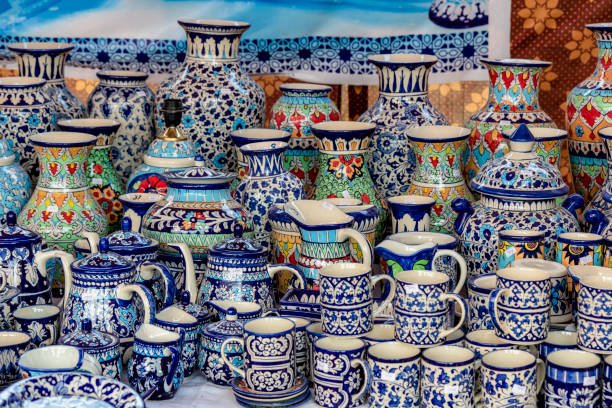
Ginger jars have evolved into legendary art objects in the complicated realm of home design. The tiny Qinlang ginger jars with lotus patterns have significant symbolic connotations and represent the cultural past. Many civilizations, especially Eastern ones, associate the lotus with purity, enlightenment, and rebirth. Qinlang jars represent it as a symbol of resilience, spiritual rebirth, and beauty.

The lotus flower blooms unstained from murky waters, symbolizing purity from pollution. Eastern religions, especially Buddhism and Hinduism, use the flower’s life cycle to represent the soul’s journey from commonplace to sacred. Lotus-themed home decor, like Qinlang ginger jars, can provide peace and spirituality.
These jars need careful craftsmanship and a deep understanding of the lotus’ symbolic meaning. Makers of Qinlang miniature ginger jars shape and fire the finest kaolin clay to create a durable, beautifully smooth canvas. The lotus pattern is hand-painted on ceramic jars with cobalt blue underglaze to ensure durability and vibrancy. The artisan’s regard for the pattern’s meaning is evident in each stroke, petal, and leaf curve.
These jars are commonly used as centerpieces on dining tables or as accents in living rooms. Adding a little Qinlang ginger jar to a home environment is more than beautiful. The lotus’s symbolic characteristics are invoked. Based on the lotus’s link with clarity and peace, homeowners may place these jars in calm, pure settings. The exquisite lotus motifs and dynamic light, shadow, and color on the jar can be highlighted by natural light streaming through windows.
Many Qinlang jars include a lotus pattern with other Chinese motifs like koi fish or flowing water, symboling prosperity and abundance. These pairings are selected to enhance the jar’s symbolic resonance and suit the collector’s tastes or household energy. A lotus-koi jar may appeal to individuals seeking peace and wealth.
The placement of these jars might also convey beliefs or objectives to guests and residents. Many cultures view decor as communicating artifacts with meanings. A Qinlang ginger jar with lotus blossoms in a home office may inspire one to relax and focus throughout stressful workdays.
These jars are valued for their cultural and artistic value and aesthetic appeal. Each Qinlang jar holds cultural stories passed down through generations of artists who refined their technique. The purchase or gift of such jars helps these traditional arts live and adapt to the modern world.
The Qinlang little ginger jar, with its lotus pattern, combines beauty, peace, and symbolic significance in an age where home decor is about reflecting personal values and objectives. It encourages stopping and thinking amid daily living and connects to historical traditions that consider adornment part of conscious and intentional life. So, each jar is more than simply decor it’s a link to the past and a canvas for personal expression, making it a beloved item in homes worldwide.
Continuing the investigation of the Qinlang little ginger jars shows that they do more than adorn a room they involve the spectator in history and culture. Traditional objects give richness and authenticity to modern homes’ diversified d cor. Choosing a Qinlang jar with a lotus theme can also be a personal journey toward harmony and purity in home and life. Each jar’s history and artistry make it more than just decor, bringing serenity and regeneration to the house amid modern upheaval. Thus, these jars are revered for their beauty, tradition, and personal reflection. These jars’ rich history and stunning designs may turn a humdrum corner into a dazzling display of art and culture. The Qinlang Little Ginger Jar is ideal for home designers who want to impact small places significantly.
Originally from China, ginger jars were used to store spices during the Qin Dynasty. Their function changed from practical to beautiful, with complex designs that reflected artistic trends. Their historical relevance, beauty, and versatility in interior design make these jars popular today.
The Qinlang Small Ginger Jar illustrates this progression. Ginger jars have a bulbous body and a domed lid, usually made of exquisite porcelain. Their size small enough to fit the smallest spaces yet striking enough to capture attention sets them apart. Their balance makes them excellent for compact flats, charming corners, and intimate areas.
Creative and careful placing are needed to decorate with such jars. I am using them as focal points work. A single Qinlang jar on a mantelpiece or bookcase can be a striking centerpiece. Its unique patterns and rich colors can brighten a simple surface or match the d cor.
Grouping these jars is another creative display. Collecting ginger jars of different sizes and designs in the same color scheme can create a captivating visual tale. This strategy creates a dynamic, coherent composition by contrasting and comparable elements. Strategic groupings can add visual interest to small spaces without taking up much space.
The Qinlang Small Ginger Jar is versatile beyond placement. The jars can also be used as decorations. They can be used as flower or plant vases, adding a natural aspect to their porcelain elegance. They can also keep keys and candies, integrating usefulness with decor.
Another area where ginger jars shine is color harmonization. The Qinlang Small Ginger Jar’s classic blue and white motifs complement rustic and modern minimalist interiors. Small spaces require every decor element to function together; thus, adaptability is very useful.
Lighting enhances these jars’ attractiveness. The Qinlang jar’s shiny surface reflects natural and artificial light, changing its look throughout the day. Strategic lighting can highlight and shadow the jar’s design, animating patterns.
Personalizing ginger jars is another option. Traditional patterns are popular, although others want to paint or decorate their jars to customize their area. DIY d cor provides personality and connects the decorator to their home.
Choosing the proper decor is vital in compact rooms, where every square inch counts. For those trying to make big statements in small spaces, the Qinlang Small Ginger Jar is an excellent choice due to its historical significance, artistic beauty, and versatility. These small jars significantly impact with careful placement, innovative use, and harmonized color schemes, illustrating that size does not limit home decor elegance and style.
Such features can turn a small area into a showcase of personal taste and cultural awareness, showing that even little spaces can express significant aesthetic objectives with the correct decor.



